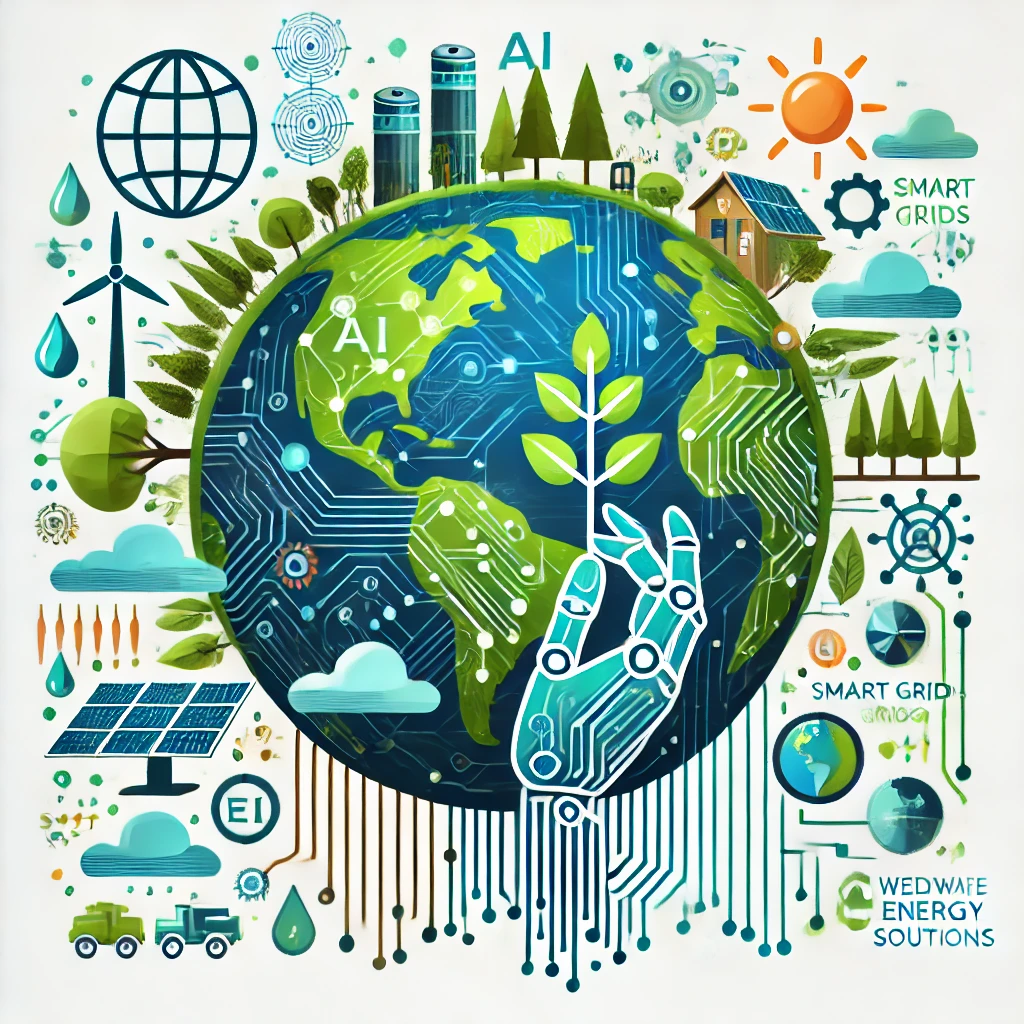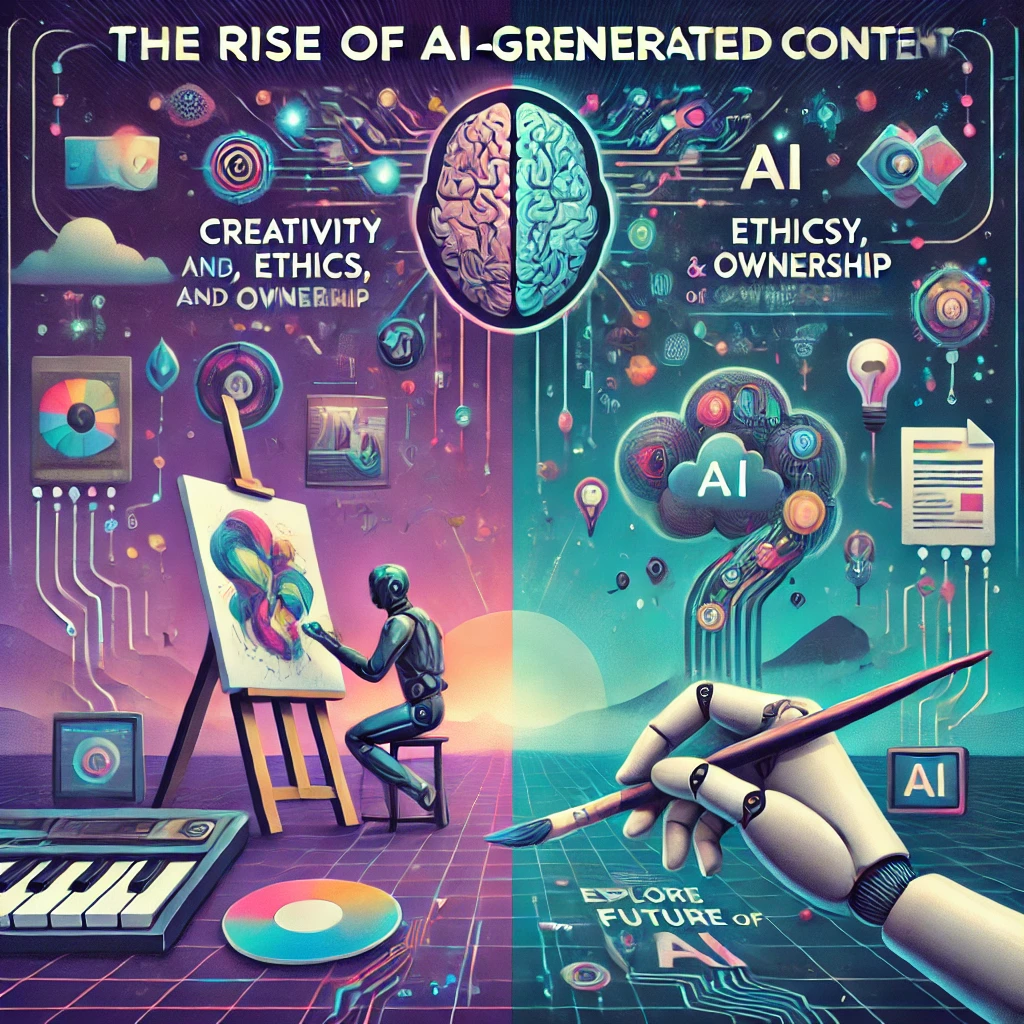As the world grapples with the escalating climate crisis, innovative solutions are urgently needed to mitigate environmental damage and promote sustainability. Enter Artificial Intelligence (AI)—a powerful tool that’s revolutionizing the fight against climate change. From optimizing energy consumption to predicting natural disasters, AI is playing a pivotal role in climate tech. In this blog, we’ll explore how AI is being leveraged to address environmental challenges, the benefits it offers, and the challenges that lie ahead.
How AI is Transforming Climate Tech
AI, particularly machine learning, is being used to analyze vast amounts of environmental data and generate actionable insights. Here are some key areas where AI is making a difference:
- Energy Optimization
AI algorithms are helping to optimize energy use in buildings, industries, and power grids. For example:- Smart Grids: AI predicts energy demand and adjusts supply in real-time, reducing waste and improving efficiency.
- Renewable Energy: AI optimizes the placement and operation of wind turbines and solar panels to maximize energy output.
- Climate Modeling and Prediction
AI enhances the accuracy of climate models by analyzing complex datasets, such as satellite imagery and weather patterns. This helps scientists predict extreme weather events, track deforestation, and monitor glacier melt. - Carbon Emission Reduction
AI is being used to track and reduce carbon emissions across industries. For instance:- Transportation: AI-powered route optimization reduces fuel consumption in logistics and shipping.
- Manufacturing: AI identifies inefficiencies in production processes to minimize waste and emissions.
- Disaster Management
AI helps predict and respond to natural disasters like hurricanes, floods, and wildfires. For example:- Early Warning Systems: AI analyzes data to provide early warnings, giving communities time to prepare.
- Post-Disaster Recovery: AI assists in damage assessment and resource allocation.
- Biodiversity Conservation
AI is being used to monitor and protect ecosystems. For example:- Wildlife Tracking: AI analyzes camera trap images to monitor endangered species.
- Deforestation Detection: AI detects illegal logging activities in real-time using satellite data.
Real-World Examples of AI in Climate Tech
- Google’s DeepMind: Used AI to reduce energy consumption in data centers by 40%, significantly cutting carbon emissions.
- IBM’s Green Horizon Project: Leverages AI to predict air pollution levels and recommend mitigation strategies.
- Rainforest Connection: Uses AI-powered acoustic sensors to detect illegal logging in rainforests.
- ClimateAI: Develops AI-driven climate risk models to help businesses and governments adapt to climate change.
Benefits of AI in Climate Tech
- Efficiency: AI optimizes resource use, reducing waste and costs.
- Accuracy: AI improves the precision of climate models and predictions.
- Scalability: AI solutions can be deployed globally, making them accessible to diverse communities.
- Innovation: AI enables new approaches to tackling environmental challenges.
Challenges and Ethical Considerations
While AI offers immense potential, it also presents challenges:
- Data Limitations: AI relies on high-quality data, which may be scarce or incomplete in some regions.
- Energy Consumption: Training AI models requires significant computational power, which can contribute to carbon emissions.
- Equity: Developing countries may lack the infrastructure and resources to implement AI solutions.
- Transparency: AI decision-making processes can be opaque, raising concerns about accountability.
The Future of AI in Climate Tech
The future of AI in climate tech is promising. Here are some trends to watch:
- AI-Driven Policy Making: Governments will use AI to design and implement climate policies.
- Citizen Science: AI will empower individuals to contribute to environmental monitoring and conservation efforts.
- Collaboration: Partnerships between tech companies, governments, and NGOs will drive innovation.
- Sustainable AI: Researchers are developing energy-efficient AI models to reduce their environmental footprint.
Conclusion
AI is a game-changer in the fight against climate change, offering innovative solutions to some of the world’s most pressing environmental challenges. By optimizing energy use, improving climate predictions, and protecting ecosystems, AI is helping to build a more sustainable future.
However, realizing the full potential of AI in climate tech requires addressing challenges like data limitations, energy consumption, and equity. With collaboration, innovation, and responsible use, AI can be a powerful ally in the global effort to combat climate change.



